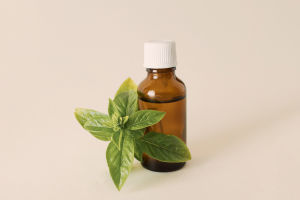Thick Creams, Deep Hydration
Moisturizing creams are essential in any skincare routine, helping maintain hydration and skin health.
One of the key differences among moisturizers is their texture.
Thicker creams have a rich consistency that makes them especially effective for dry, mature, or sensitive skin. This article explores the benefits of using thicker moisturizing creams, how they differ from lighter lotions, and tips on incorporating them into your skincare routine.
The texture of a moisturizing cream is determined by its ingredients. Thicker creams contain high concentrations of emollients and occlusives, which help form a protective layer on the skin to lock in moisture. Common ingredients in these creams include:
- Shea Butter
- Cocoa Butter
- Lanolin
- Petrolatum (Vaseline)
- Natural Oils (like coconut and jojoba)
These ingredients give the cream its dense, rich texture and are excellent for creating a barrier to prevent moisture loss. Thicker creams may also contain humectants like hyaluronic acid and glycerin, which draw water into the skin for enhanced hydration.
Benefits of Thick Moisturizing Creams
- Deep Hydration and Moisture Retention
The primary advantage of thicker creams is their ability to provide deep hydration and prevent water loss.
The dense texture creates a strong barrier over the skin, making them ideal for dry, flaky, or dehydrated skin that needs intensive moisture.
- Great for Nighttime Use
Thicker creams are perfect for overnight use as they provide sustained hydration while the skin naturally repairs itself. Applying a rich moisturizer before bed helps to maximize the skin’s repair process and retain moisture throughout the night.
- Ideal for Dry and Mature Skin
People with dry or mature skin benefit significantly from thicker creams. Dry skin lacks natural oils, and thicker creams help compensate for this deficiency. For mature skin, which tends to produce less oil and lose elasticity, thick moisturizers help smooth fine lines and maintain skin plumpness.
- Protection from Environmental Stressors
Thick creams protect the skin against environmental elements like cold winds, dry air, and pollution. This is particularly helpful in winter months or in dry climates, where skin is more prone to moisture loss and damage.
- Soothing and Calming for Sensitive Skin
Many thick moisturizers contain soothing ingredients like aloe vera, oatmeal, or chamomile, which help calm irritated or sensitive skin. They restore the skin’s barrier function and reduce redness and inflammation.
How to Use Thick Moisturizing Creams
- Apply on Damp Skin
For optimal absorption, apply thick cream on slightly damp skin, such as right after a shower or after cleansing your face. This helps the cream lock in the water on your skin and enhances its hydrating effect.
- Layer in Your Routine
When using a multi-step skincare routine, apply lighter products like serums first, then use the thicker cream as the last step to seal in moisture and enhance hydration.
- Nighttime and Targeted Use
Thick creams are great for nighttime use, providing intensive repair as you sleep. Additionally, they can be used on specific dry areas like elbows, knees, hands, and feet for targeted moisture.
Choosing the Right Thick Cream
- Match with Your Skin Type
Dry or mature skin types benefit the most from thicker creams, but even those with combination skin can use them by applying only on dry areas or using them as a nighttime treatment.
- Look for Nourishing Ingredients
Ingredients like natural butters (shea, cocoa) and oils (jojoba, almond) along with humectants (hyaluronic acid, glycerin) offer hydration and nourishment to keep the skin soft and healthy.
- Avoid Potential Irritants
For sensitive skin, avoid ingredients like fragrances, dyes, or alcohol-based components that could irritate or dry out the skin.


